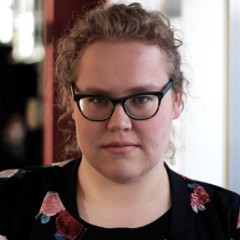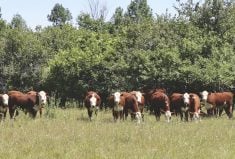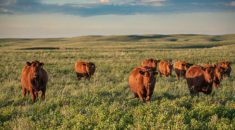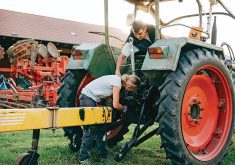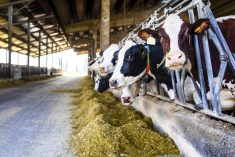Glacier FarmMedia – The message may go something like this: farmers live in a carbon-priced world and it’s time they started making that a positive, not a negative. Sign this contract, plant a cover crop and, based on the resulting carbon offsets, make a little money off some corporation’s environmental goals.
But the landscape around carbon markets is much less cut and dried than that. There’s a variety of approaches, a range of financial failures and successes and a spectrum of credibility among active players in the market.
Given all that, producers may feel the details around carbon offsets are a little murky.
Read Also

Moo translator and methane measures: There’s an app for that
Dalhousie University researchers use artificial intelligence to create new dairy farm apps that analyze cattle sounds and measure methane.
Kimberly Cornish is a consultant and researcher on carbon-related projects based in Olds, and founder of the Food Water Wellness Foundation.
She urged producers interested in carbon credits to pay special attention to the protocols of companies they work with. Those lay out the practices farmers will be expected to use in order to sequester carbon or reduce emissions.

Since 2021, fertilizer giant Nutrien has been piloting a carbon credit program in the U.S. and Canada. In Canada, it requires farmers to follow either the NERP (nitrous oxide emission reduction protocol) or CCP (conservation cropping protocol), said Sally Flis, Nutrien’s director of sustainability program design and outcome management.
NERP focuses on moving farmers to more advanced application of 4R nutrient management principles, she said. For example, producers might move from simply having a 4R plan to adding a nitrification inhibitor or adopting variable rate application.
Under the protocol, direct and indirect emission reductions are calculated by comparing historic emissions (based on three years of data) to the farm’s emissions after implementing the new 4R practices. Those numbers are estimated using crop production and nitrogen-use data, according to an explainer put out by Fertilizer Canada.
Nutrien is still working to verify its carbon credits, though Flis maintains the company is getting “really, really, really close,” to having marketable offsets.
Nutrien hopes to one day pay farmers after its generated offsets have sold, but in this piloting phase, it is compensating farmers $50 per tonne of calculated emission reductions instead of making them wait.
Carbon Assets Solutions is an Australian company with subsidiaries in the United States and United Kingdom. Its Canadian headquarters is located at the Olds College Smart Farm in Olds, Alta. The company has been recruiting growers and has a different approach.
It drags a scanner over enrolled fields, which measures the amount of carbon in the top 30 centimetres, according to the company’s Canadian director, Robin Woodward. It combines that measurement with estimated emissions levels (based on the farm’s practices) to get a baseline.
The farmer then works with their agronomist or agrologist to plan changes they can make to sequester more carbon. The idea is that producers can choose practices that suit their operation and region.
In two years, the company returns with a scanner, verifies that the farmer’s plan was implemented, collects farm emissions data and measures how much carbon is now present. The difference is turned into carbon credits.
Recognizing that farmers may need to spend money to adopt new practices, the firm creates a “forward sale” based on 20 per cent of the current market value of the offsets. At the end of the two-year contract, it provides a “finalization payment,” Woodward said.
Eyes open
Cornish didn’t endorse or criticize specific companies, but said generally that a lack of protocol creates greater risk for producers.
“That’s the big issue that people need to be very aware of … you don’t have the rules of the game set and you’re asking people to commit to playing the game,” she said.
She advised farmers to study the contract and determine the commitment. For instance, if carbon sequestration or emissions reduction doesn’t advance according to the company’s expectations, can it come onto the farm and force the producer to make changes? Does it give the company access to the land? For how long is the farmer obligated to continue practices?
Questions of protocol are also tied to questions of compensation and liability.
While some practices and protocols, like no-till and NERP, have fairly well-documented outcomes, most agriculture-based carbon isn’t formulaic.
Carbon can go backwards, Cornish warned. If there’s a drought or a flood, that can stop sequestration or reduce the amount of carbon in the soil.
“You can be the best manager in the world and, if you hit five years of drought … then you’re in this position,” she said.
It’s important to know who is on the hook if things go south, especially if farmers are being pre-paid for offsets yet to be generated.
And there’s a record of things going south in big ways.
This January, a high-profile investigation published by the Guardian, a British national newspaper, found that rainforest-based carbon offsets approved by Verra – until then the “world’s leading carbon standard for the … voluntary offsets market,” according to the paper – were largely worthless.
These offsets were sold to high-profile companies like Disney, Shell and Gucci, the report said.
“Money has changed hands. That’s a huge liability,” Cornish said. “Who is going to fall on that sword?”
It’s a good reason to read contracts closely and have a lawyer do so as well, she suggested.
Carbon Assets Solutions says if farmers have not made gains at the end of a two-year contract despite implementing new practices, they won’t be forced to pay the money back. Farmers could stick around for another two years and measure again, but the firm also has built-in risk management structures to balance this type of failure.
Credibility and demand
Following the Guardian report, prices and demand plunged for Verra’s rainforest offsets, according to another March 2023 article by the same newspaper.
Other nature-based offsets were also affected, said Kate Ervine, an associate professor at Saint Mary’s University in Nova Scotia who has an extensive background in carbon markets.
It led to significant conversations about how to fix the credibility problem.
For now, perceived trustworthiness and track record appear to have a large bearing on what offsets sell for, or if they sell at all.
Earlier this year, Glacier FarmMedia spoke with Manitoba producer Barclay Uruski and other farmers who said they’d signed up for Farmers Edge’s Smart Carbon program, but had yet to see a dime. Farmers Edge said it couldn’t find buyers for the farm-produced credits, or at least not at the prices it was asking.
In a July webinar, Corteva representatives extolled the success of the company’s U.S. offset program and, in response to a question from Glacier FarmMedia, claimed it had more buyers than credits. That raised the price it could command.
In Ervine’s analysis, Corteva’s program likely benefits from U.S. economies of scale. There are many big companies with big environmental goals.
Corteva, a big name in its own right, also works with Indigo Ag to verify and register its offsets. Indigo Ag uses a protocol from the Carbon Offset Reserve, one of the largest registries in the world. Besides verifying for the voluntary offset market, it verifies offsets for California and Washington’s compliance carbon markets.
“They’re definitely a trusted player,” Ervine said.
Farmers Edge is dealing with a lower-demand market, she said. It registers its offsets with the CSA Group’s GHG CleanProjects Registry, a spokesperson told Glacier FarmMedia, and works with an “independent, accredited third-party verifier” to verify its offsets.
Ask, ask, ask
Cornish advised farmers to check whether a company has sold credits before. If it has, that’s proof it can sell and may indicate what price it can command.
However, she also said she has only heard of one instance in which farmers made really good money on carbon offsets. It involved perfect growing and market conditions and it was in Australia.
In Alberta’s now retired government-regulated system, farmers could expect a few dollars per acre. While Cornish has heard of producers being promised up to $100 per acre, she suggested that may be overly optimistic.
Cornish says farmers should consult their peer network about experiences and insights, ask a lawyer for an opinion, and understand the contract and the risks.
– This article was originally published at the Manitoba Co-operator.

